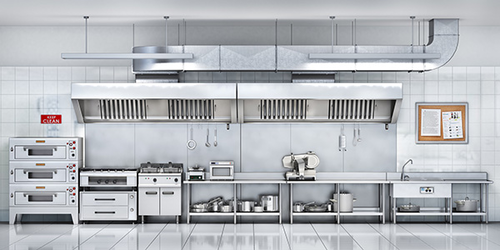MULTI-SERVICE Building Services GmbH - expertise in the field
Everything from one source & certainly clean
 MULTI-SERVICE Building Services GmbH is your professional partner for building cleaning and other services in the Rhein Main area. For over 50 years, the satisfaction of our customers has been our highest asset.
MULTI-SERVICE Building Services GmbH is your professional partner for building cleaning and other services in the Rhein Main area. For over 50 years, the satisfaction of our customers has been our highest asset.
Clear agreements from the quotation phase to final acceptance are the be-all and end all. Our clients can be confident that transparency, quality and reliability are our top priority in our services.
Due to our many years of professional experience, we meet the highest standards of cleanliness, reliability and, above all, discretion. It all comes from a single source and you do not have to communicate with constantly changing interlocutors.
We specialize in cleaning and disinfecting with HACCP
Hardly any industry is subject to such strict hygiene and cleaning requirements as the food industry. Numerous standards and laws determine the handling of machines and systems, premises, personnel, operating resources and raw materials. When implementing these guidelines, you must focus on quality.
For this reason, you must not compromise on hygiene in the food sector!
Therefore rely on the decades of experience of multi-service building services! We tailor our cleaning services exactly to your existing HACCP concept and integrate them into your production processes.
- Professional cleaning of all premises where food is produced, processed, prepared or stored
- Complete supply of all premises with consumables (soap, disinfectants, disposable towels, etc.)
- Professional cleaning of all machines, systems and devices that come into contact with food
- Assumption of the entire fluid management for machines and plants (purchasing, delivery, inspection and, if necessary, replacement of coolants and lubricants)
- Waste management (hygienic waste disposal of packaging, production residues, food waste, etc.)
The cleaning removes unwanted substances such as food residues, dust, deposits from surfaces etc. In addition, with a thorough cleaning on the surface existing microorganisms are significantly reduced. The remaining microorganisms will be deprived of the basis for further reproduction.
Cleaning is a process whose success depends on several factors.
The selection of the cleaning agent to be used depends on the impurities to be removed, but also the material properties and the applicable mechanics. The basic requirements for cleaning agents are in particular good dirt dissolving capacity, good material compatibility, good rinsability, easy handling, no harmfulness to health, environmental friendliness and suitability in the food industry. The most important ingredients and modes of action of detergents can be summarized as follows:
| active substance | Effect / Remove |
| Alkalische Waschmittel | Protein, Emulsifying fat |
| acidic Detergents | Minerals and starch |
| surfactants | Pigments / fats |
| dispersant | minerals |
| complexing agent | Pigments and minerals |
| enzymes | Proteins, starch and fats |
| oxidant | Protein, starch and pectins |
Corrosion inhibitors serve to improve the material compatibility. If necessary, substances can be added to cover the odor of the raw materials. For product recognition, dyes are often used which mask the natural color of the raw materials. However, there is a risk of color transfer to equipment and products.
Too high temperatures, however, would lead to an inhibition of the enzyme activity and thus to a reduction of the desired effect.
Time and mechanics: A longer exposure time of the cleaning solution facilitates the removal of the dirt through the better swelling of the dirt and a better chemical decomposition of the dirt components.
Mechanical factors such as brushing or the pressure of the jet of water reduce the adhesion between the dirt and the surface, and it is easier to rinse off the debris.
disinfection
Disinfection means that undesirable microorganisms (pathogens and spoilage pathogens) are reduced to a level that is neither harmful to health nor adversely affects the quality of food. Effective disinfection ensures the basic food hygiene requirements ("health-safety and suitability for consumption").
As with cleaning, the factors influencing Sinner's circle (chemistry, temperature, time and mechanics) also apply to disinfection. In addition, however, comes the nature of the various microorganisms such as bacteria, yeasts, molds, enveloped and non-enveloped viruses, spores, bacteriophages and possibly unicellular parasites. Here, a quite different effect of the various disinfecting agents may be present.
The success of disinfection measures (killing or inactivation of the unwanted microorganisms = bactericidal or bacteriostatic) can be impaired by the so-called protein error. This is understood to mean the negative influence of protein, for example from food residues, on the disinfection success. Certain disinfecting agents not only react with the proteins of the microorganisms, but also with the proteins and from food, so that this results in a "competitive situation". Chlorine-based disinfectants have such a protein defect ("chlorine depletion"). Surfactant residues from detergents can also lead to reactions with some disinfecting agents, rendering them ineffective ("soap faults" of quaternary ammonium compounds). As a "cold error" is the negative impact of low temperatures of the disinfectant solution called, since it can lead to a slowing down of chemical and physical processes and thus the disinfecting effect.
When selecting disinfectants, it is important to use those preparations whose microbiocidal activity is also proven. In the selection, the so-called disinfectant lists are helpful, which include a listing of the found to be effective disinfectants and their conditions of use.
When selecting disinfectants, it is important to use those preparations whose microbiocidal activity is also proven.
Latest modification: 23.10.2023






